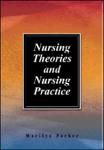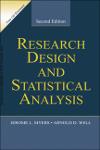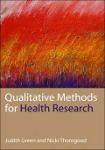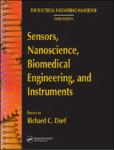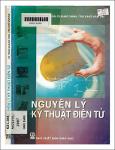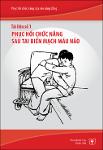Browsing by Issue Date
Showing results [1 - 20] / 3592
- <<
- 1
- 2
- 3
- 4
- 5
- 6
- 7
- 8
- 9
- 10
- 11
- 12
- 13
- 14
- 15
- 16
- 17
- 18
- 19
- 20
- 21
- 22
- 23
- 24
- 25
- 26
- 27
- 28
- 29
- 30
- 31
- 32
- 33
- 34
- 35
- 36
- 37
- 38
- 39
- 40
- 41
- 42
- 43
- 44
- 45
- 46
- 47
- 48
- 49
- 50
- 51
- 52
- 53
- 54
- 55
- 56
- 57
- 58
- 59
- 60
- 61
- 62
- 63
- 64
- 65
- 66
- 67
- 68
- 69
- 70
- 71
- 72
- 73
- 74
- 75
- 76
- 77
- 78
- 79
- 80
- 81
- 82
- 83
- 84
- 85
- 86
- 87
- 88
- 89
- 90
- 91
- 92
- 93
- 94
- 95
- 96
- 97
- 98
- 99
- 100
- 101
- 102
- 103
- 104
- 105
- 106
- 107
- 108
- 109
- 110
- 111
- 112
- 113
- 114
- 115
- 116
- 117
- 118
- 119
- 120
- 121
- 122
- 123
- 124
- 125
- 126
- 127
- 128
- 129
- 130
- 131
- 132
- 133
- 134
- 135
- 136
- 137
- 138
- 139
- 140
- 141
- 142
- 143
- 144
- 145
- 146
- 147
- 148
- 149
- 150
- 151
- 152
- 153
- 154
- 155
- 156
- 157
- 158
- 159
- 160
- 161
- 162
- 163
- 164
- 165
- 166
- 167
- 168
- 169
- 170
- 171
- 172
- 173
- 174
- 175
- 176
- 177
- 178
- 179
- 180
- >>
The goal of this book is to teach you to think like a computer scientist. I like the way computer scientists think because they combine some of the best features of Mathematics, Engineering, and Natural Science. Like mathematicians, computer scientists use formal languages to denote ideas (specifically computations). Like engineers, they design things, assembling components into systems and evaluating trade offs among alternatives. Like scientists, they observe the behavior of complex systems, form hypotheses, and test predictions.The single most important skill for a computer scientist is problem-solving. By that I mean the ability to formulate problems, think creatively about soluti... |
This book offers the perspective that nursing theory
is essentially connected with nursing practice, research, education, and development. Nursing theories, regardless of complexity or abstraction, reflect
nursing and are used by nurses to frame their thinking, action, and being in the world. As guides for
nursing endeavors, nursing theories are practical in
nature and facilitate communication with those being nursed as well as with colleagues, students, and
persons practicing in related health and illness services. At the same time, all aspects of nursing are essential for developing and evolving nursing theory.
It is hoped that these pages make clear the interrelations of nurs... |
In Basic Engineering Data Collection and Analysis, Stephen B. Vardeman and J. Marcus Jobe stress the practical over the theoretical. Step by step, students get real engineering data and scenario examples along with chapter-long case studies that illustrate concepts in realistic, thoroughly detailed situations. This approach encourages students to work through the material by carrying out data collection and analysis projects from problem formulation through the preparation of professional technical reports—just as if they were on the job. |
Quyết định 4069/2001/QĐ-BYT ngày 28/09/2001 ban hành mẫu hồ sơ, bệnh án do Bộ trưởng Bộ Y tế ban hành |
If a project is to be successfully completed,
both planning and execution must be properly
implemented. Poor planning will not allow
appropriate execution and control processes
or achievement of the project’s targets. The
objective of the study reported in this paper
is to evaluate the impact of the project manager on the quality of project planning processes
within the nine knowledge areas defined by
A Guide to the Project Management Body of
Knowledge (PMBOK® Guide) and to determine
ways of increasing the effectiveness of the
manager’s intervention. Participants in the
study evaluated their use of the 21 processes
that relate to planning, out of the 39 processes required... |
On the face of it, enormous political, social and economic changes were taking place in Vietnam. However, while the Vietnamese media fre quently refers to the country’s ratification of the CRC as an unprecedented success for the welfare of its children (Khanh, 1996), my research findings, like those of Bond (1994), indicate that the CRC was ratified and then actively used among aid agencies without due consideration to the specific nature of local value systems. |
In writing this book, we had two overriding goals. The first was to provide a textbook from
which graduate and advanced undergraduate students could really learn about data analysis.
Over the years we have experimented with various organizations of the content and have
concluded that bottom-up is better than top-down learning. In view of this, most chapters
begin with an informal intuitive discussion of key concepts to be covered, followed by the
introduction of a real data set along with some informal discussion about how we propose
to analyze the data. At that point, having given the student a foundation on which to build,
we provide a more formal justification of the computa... |
There are a number of excellent introductory textbooks available on qualitative research, so the decision to produce yet another one perhaps needs justifying. We have written this one in response to frequent requests from our students,v who are predominantly postgraduates with considerable professional experience but little prior knowledge of the social sciences. They come from almost all countries in the world, and want an introduction to qualitative methods that is sensitive to the practicalities of doing sound research on health topics in a wide variety of settings. Although the principles of research design and conduct may be the same wherever it is happening, and whatever the top... |
This book describes the circumstances in which the premature termination of an individual's trial bars a subsequent trail for the same offense. It also examines when the Clause prohibits the government from imposing multiple punishments for the same offense. The final chapter includes a discussion of bibliographical sources. |
Abstracting and non-profit use of the material is permitted with credit to the source. Statements and opinions
expressed in the chapters are these of the individual contributors and not necessarily those of the editors or
publisher. No responsibility is accepted for the accuracy of information contained in the published articles.
Publisher assumes no responsibility liability for any damage or injury to persons or property arising out of the
use of any materials, instructions, methods or ideas contained inside. After this work has been published by the
Advanced Robotic Systems International, authors have the right to republish it, in whole or part, in any
publication of which the... |
As we continue to be challenged by the organization and financing of the contemporary health
care system, as well as a worldwide nursing shortage, the need to articulate what nursing is and
can be has never been more critical. Conceptual models of nursing and nursing theories provide
clear answers to questions about what nursing is, what nursing can be, and how what nursing is
and can be influences what nurses do—or should do. Conceptual models of nursing and nursing
theories also provide:
• Answers for nurse educators, who continue to seek better ways to prepare students for
current and future trends in health services.
• Answers for nurse researchers, who continue to seek wa... |
This book contains information obtained from authentic and highly regarded sources. Reprinted material is quoted with
permission, and sources are indicated. A wide variety of references are listed. Reasonable efforts have been made to publish
reliable data and information, but the author and the publisher cannot assume responsibility for the validity of all materials
or for the consequences of their use. |
Giáo trình được chia ra làm hai phần tương ứng với hai học phần hiện nay của chương trình giáo dục đại học của Bộ Giáo dục – Đào tạo: Phần thứ nhất - Những vấn đề chung về Hiến pháp và Phần thứ hai - Những chế định cơ bản của Hiến pháp. |
Tài liệu Nguyên lý Kỹ thuật điện tử trình bày về nguyên tắc hoạt động cơ bản của các linh kiện và mạch điện tử thông dụng. Ngày nay kỹ thuật điện tử được áp dụng hêt sức rộng rãi trong nhiều lĩnh vực khoa học công nghệ và đời sống. |
Bộ tài liệu Phục hồi chức năng dựa vào cộng đồng. Gồm 20 tài liệu: Phục hồi chức năng dựa vào cộng đồng lần đầu tiên được giới thiệu tại Việt Nam từ năm 1987. Lúc đầu chương trình được thử nghiệm tại Tiền Giang, Vĩnh Phú và đã đem lại những thành công và ý nghĩa xã hội lớn lao. Nhờ đó, Phục hồi chức năng dựa vào cộng đồng đã nhanh chóng được các tỉnh khác học tập và nhân rộng trong những năm tiếp theo.Từ thực tiễn và kết quả thu được, Phục hồi chức năng dựa vào cộng đồng được ngành y tế xác định là chiến lược để giải quyết vần đề khuyết tật với chi phí thấp nhưng đem lại nhiều cơ hội hoà nhập cho người khuyết tật. Cho tới năm 2006, ước tính trên toàn quốc đã có khoảng 44 Tỉnh, Thành p... |
Welcome to Quantitative Methods for Health Research, a study programme designed to introduce
you to the knowledge and skills required to make sense of published health research, and to begin
designing and carrying out studies of your own.
The book is based closely on materials developed and tested over almost ten years with the
Master of Public Health (MPH) programme at the University of Liverpool, UK. A key theme of
our approach to teaching and learning is to ensure a reasonable level of theoretical knowledge
(as this helps to provide a solid basis to knowledge), while placing at least as much emphasis
on the application of theory to practice (to demonstrate what actually happ... |



